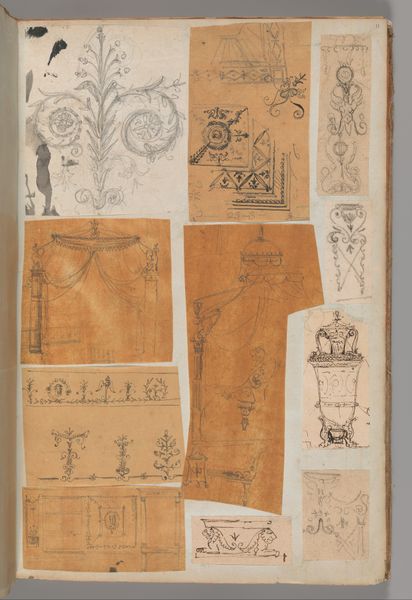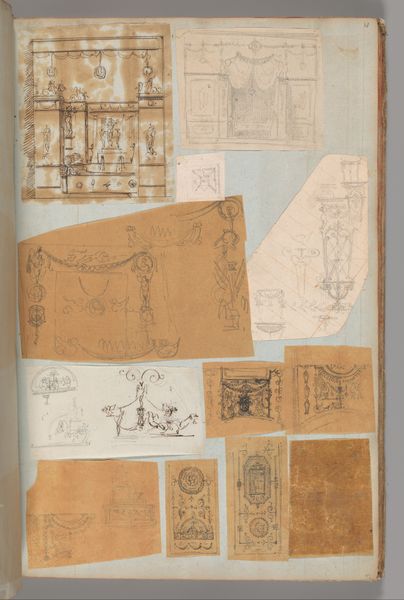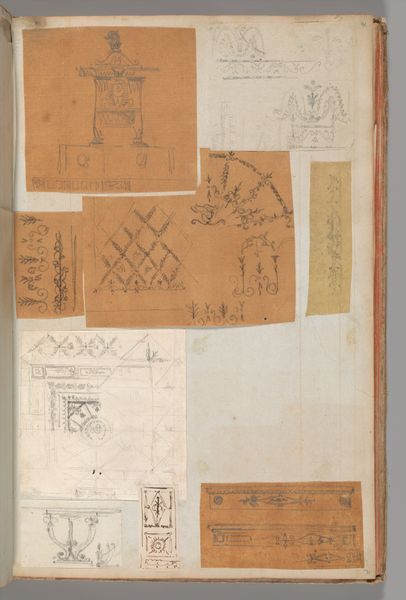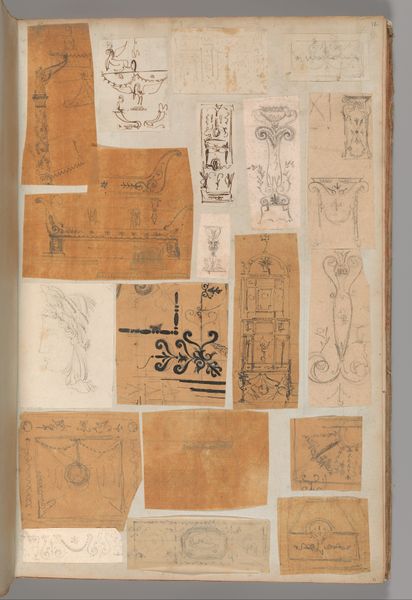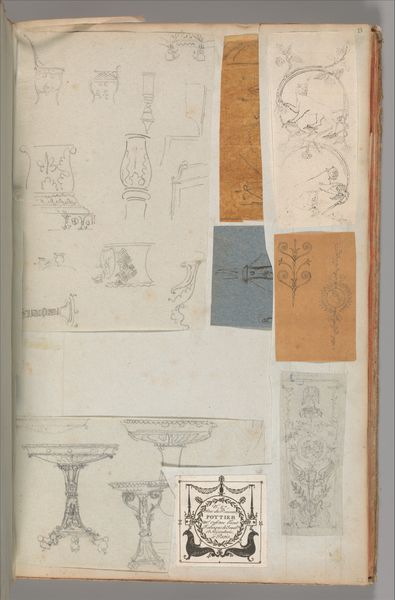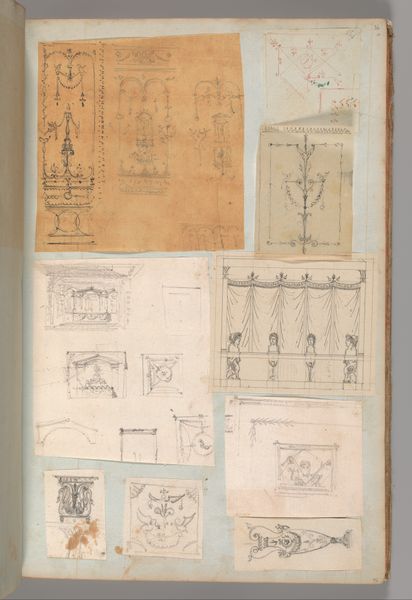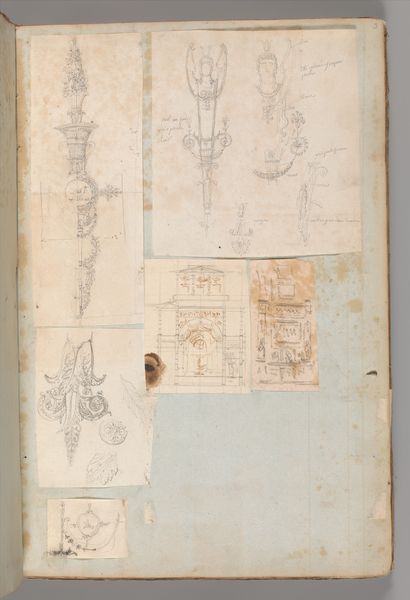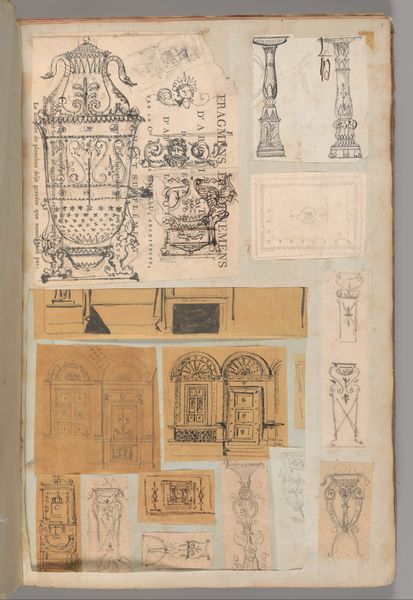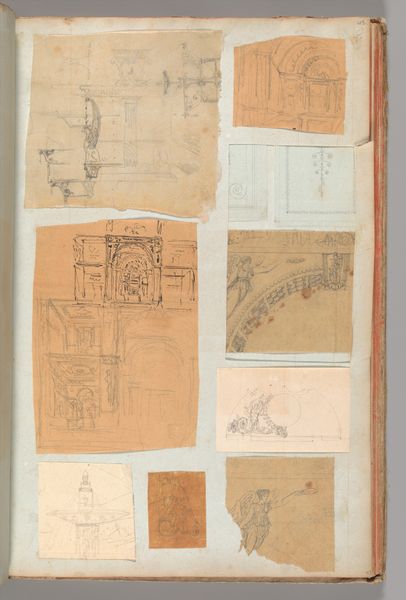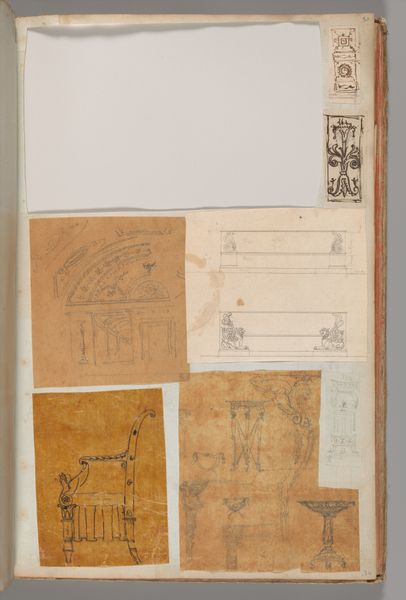
Page from a Scrapbook containing Drawings and Several Prints of Architecture, Interiors, Furniture and Other Objects 1795 - 1805
0:00
0:00
drawing, print, paper, ink, pencil, pen, architecture
#
portrait
#
drawing
#
neoclacissism
# print
#
book
#
paper
#
ink
#
geometric
#
pencil
#
line
#
pen
#
academic-art
#
architecture
Dimensions: 15 11/16 x 10 in. (39.8 x 25.4 cm)
Copyright: Public Domain
Editor: Here we have a page from a scrapbook by Charles Percier, created sometime between 1795 and 1805. It contains architectural drawings and prints rendered in ink, pen, pencil, and paper. The assortment of images is intriguing; what strikes you when you look at it? Curator: Well, I see a compelling case study in the deconstruction of "high art." These aren't finished pieces meant for display. They're process. Look at the varying techniques, the visible changes in pressure and line, and the overall function. Percier shows the labor. We can analyze the labor as a system – both the artist's and that of the society enabling his practice. Where did his materials come from? Who produced them? These are questions of material history embedded within. Editor: That's interesting, because I was mainly focusing on the finished image. But seeing the sketch-like quality makes me think more about the labor of the artist. Curator: Exactly! These raw sketches allow us to see beyond the idealized Neoclassical aesthetic, towards the actual hands-on work that created those flawless designs. We can really engage with this piece in a fresh way, understanding it not just for its aesthetics but for its testimony to its own making. Do you see how it complicates our notions of "art" versus "craft," once we engage with process over just presentation? Editor: I see your point. It’s almost like we’re getting a behind-the-scenes look at the artist’s methods and influences. It flattens the hierarchy. What once was considered a sketch meant for a means to an end can now be viewed as an art piece itself. Curator: Precisely. It revalues not just the skill, but the material history woven within each choice – pencil to paper to design. That accessibility provides a lens through which to interrogate what exactly makes up a movement, as well as its means. Editor: I will definitely look at drawings differently going forward!
Comments
No comments
Be the first to comment and join the conversation on the ultimate creative platform.
